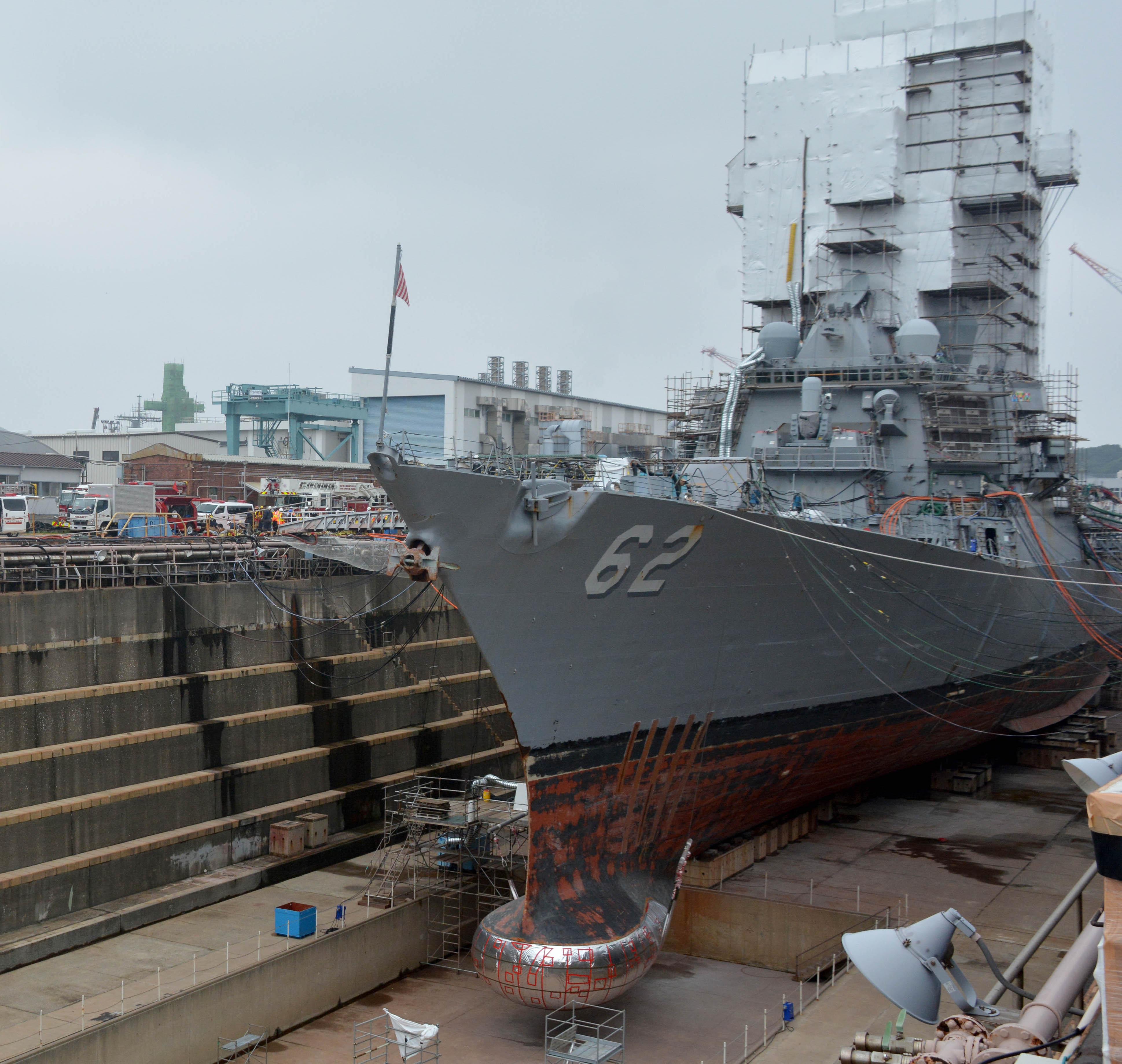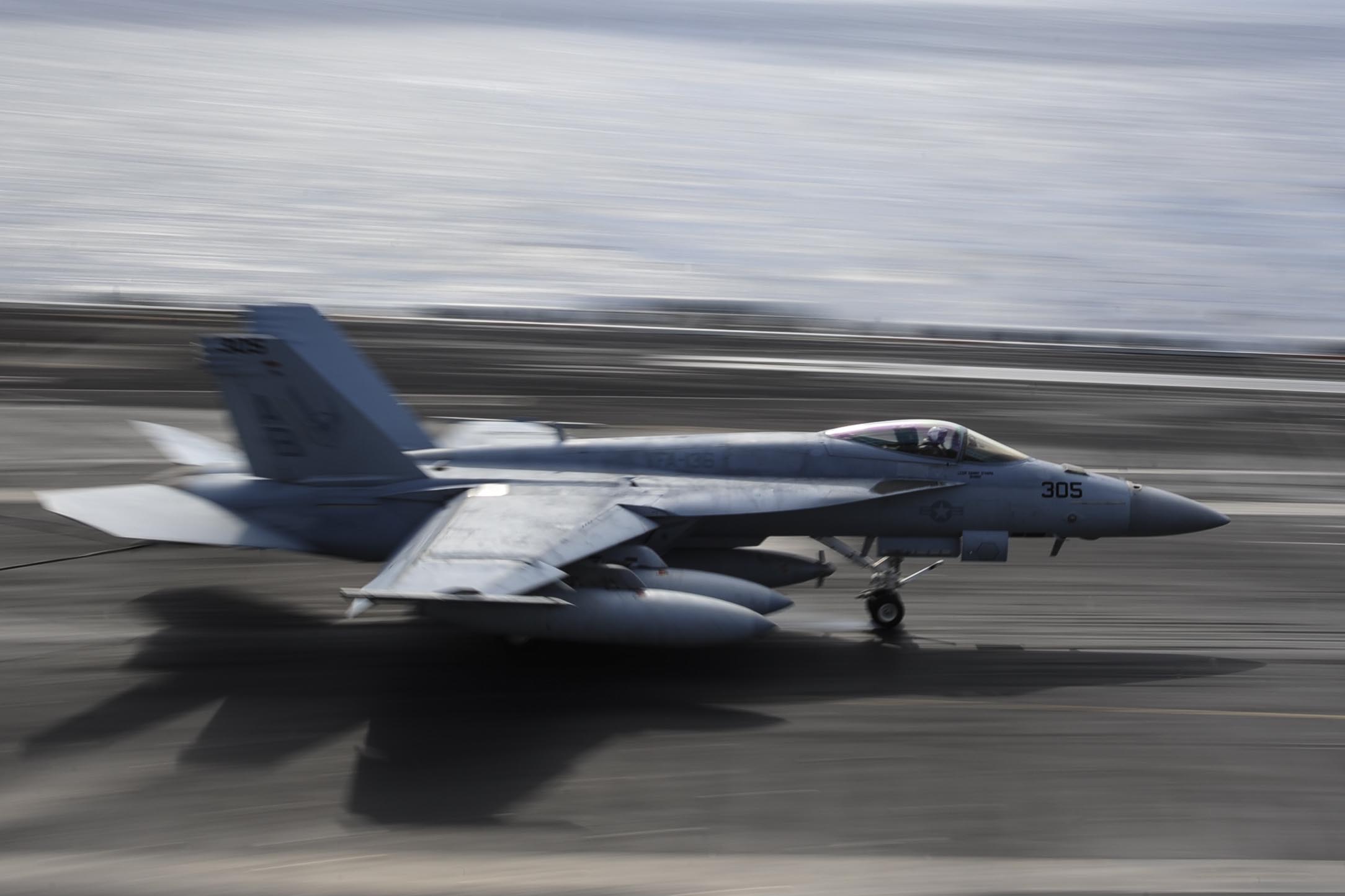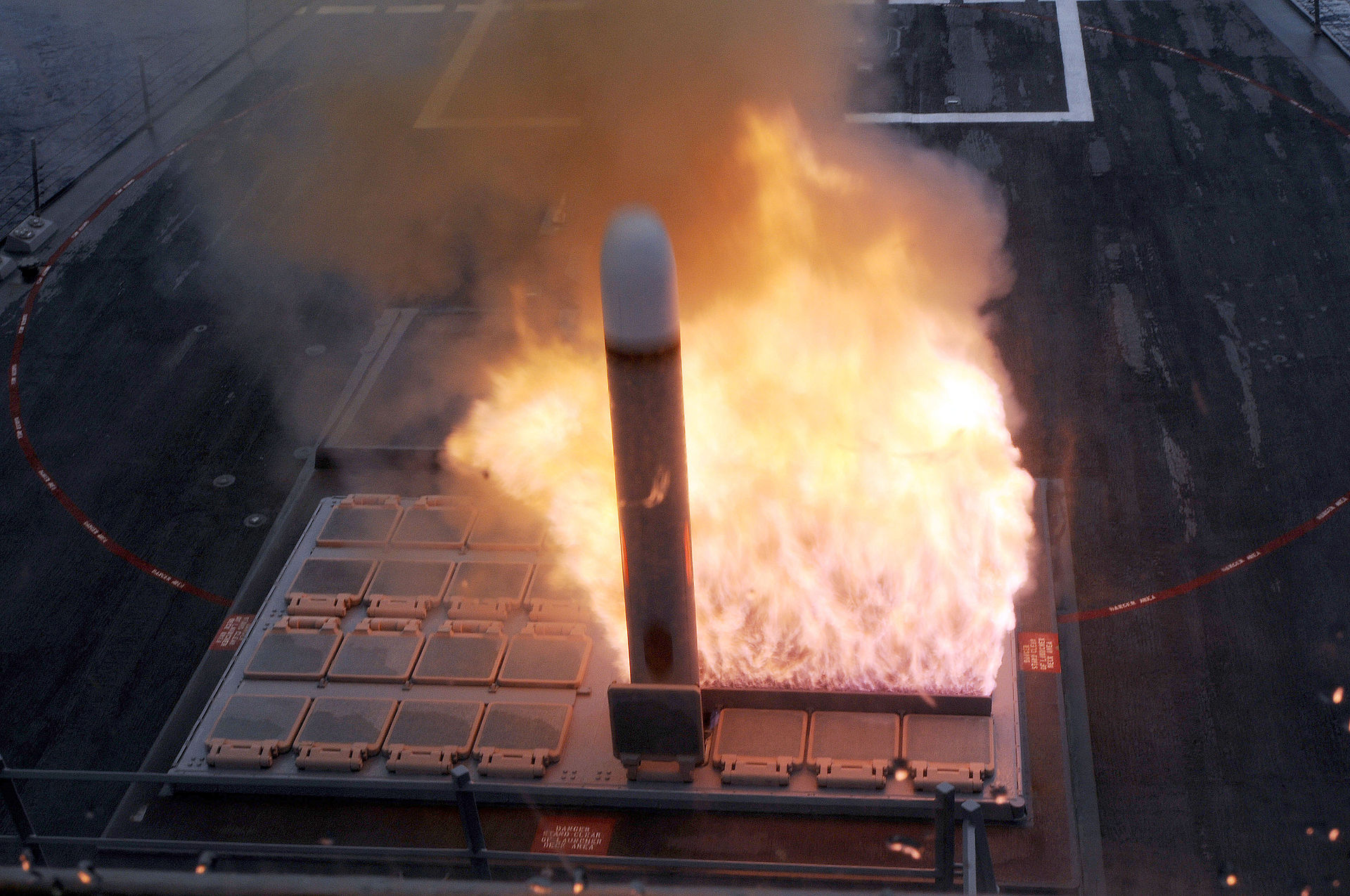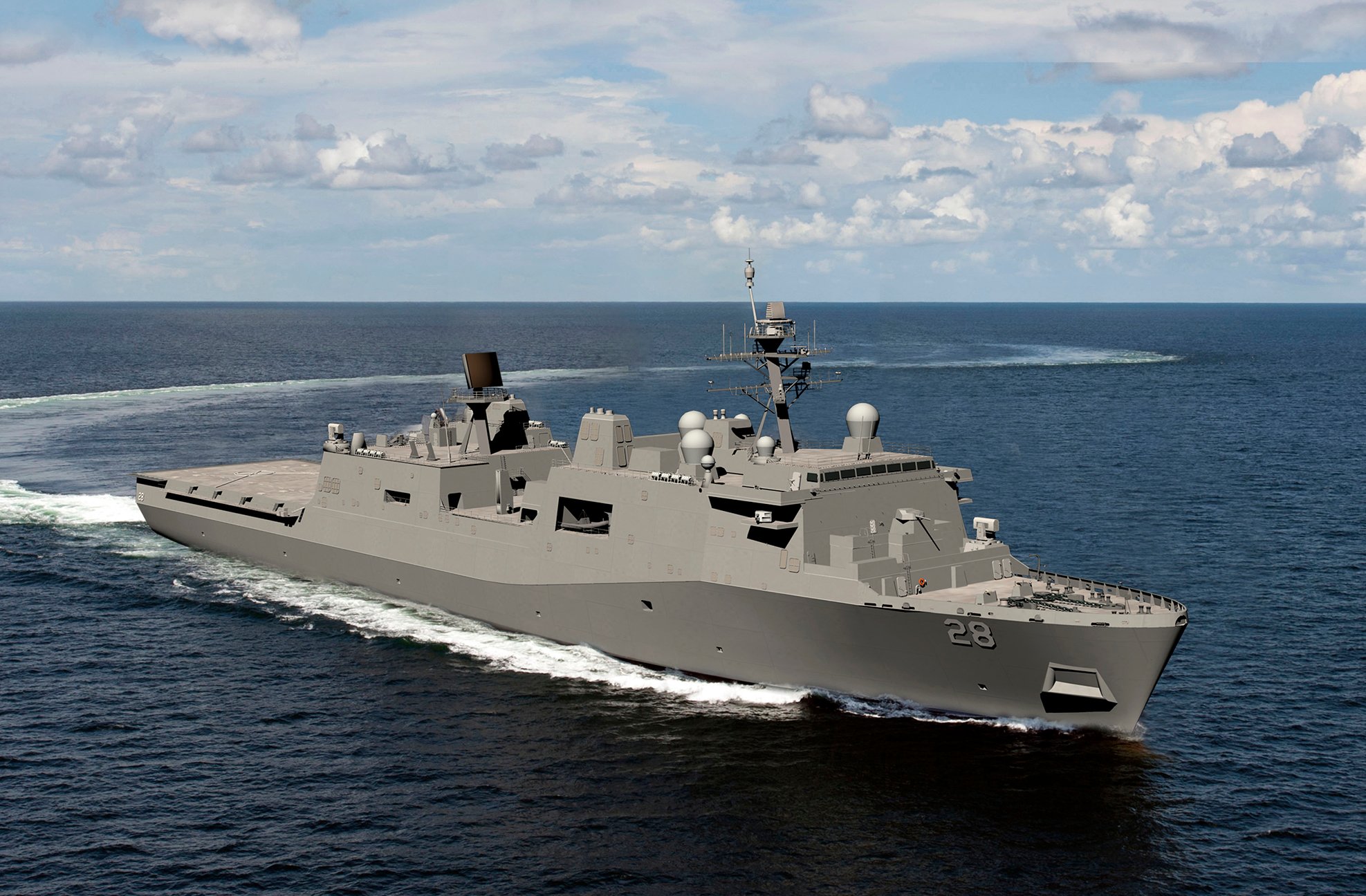
The Navy wants $2 billion in additional funding this year for much-needed ship maintenance and fleet operations, and would also buy two dozen Super Hornets and an additional San Antonio-class amphibious warship if money were made available, according to an early January draft wish list obtained by USNI News.
While the list is not as official as the February 2016 Unfunded Priorities List from which it stems, it is meant to be a conversation-starter with Congress and the new Trump Administration on the Navy’s needs for today and in the near term, a senior service official told USNI News on Tuesday. The main message of that conversation is that current readiness must be addressed first, with acquisitions wishes being addressed afterwards with whatever funding may remain, a senior Navy official told USNI News.
“Our priorities are unambiguously focused on readiness – those things required to get planes in the air, ships and subs at sea, sailors trained and ready,” the official said.
Ahead of upcoming congressional hearings and discussions about additional money Congress and the Trump Administration may give the military through a supplemental funding measure, the Navy updated its current-year wish list.
In recent years the services have submitted their budget requests to Congress through the Office of the Secretary of Defense, and then separately sent a list of unfunded priorities that were not including in the official request but would be important if more money were made available. The Navy submitted a Fiscal Year 2017 Unfunded Priorities List (UPL) in February 2016 to supplement its FY 2017 official submission. In that UPL were requests for 14 F/A-18E/F Super Hornets, two additional carrier-variant F-35C Lighting II Joint Strike Fighters, the remainder of the funding needed to buy an additional Arleigh Burke-class destroyer beyond the Navy’s original shipbuilding plan, and weapons.
The draft list is a reflection of the Navy’s current needs based on global affairs, current fleet operations and other factors, the official said.

The wish list was shared to inform upcoming budget discussions, though the document’s introduction notes that the “the Navy does not intend to submit a revised FY 2017 Unfunded Priorities List (UPL) until we engage further with the new Administration on potential changes in the defense strategy and priorities” – though through this informal update, the Navy increases its formerly 35-item list to a now-59-item list based on current needs.
The first section of the updated list addresses afloat readiness, which both the Navy and the new Trump Administration have said would be a primary focus of any FY 2017 supplemental. A supplemental package being informally discussed now would provide about $40 billion in additional funding for the military, though details about how that might break down by service have not yet been made public.
More than $500 million for air operations and flying hours, as well as $339 million for ship operations and $647 for ship depot maintenance, sit atop the wish list. These items were included in the original UPL but have been prioritized first in this most recent version. New additions to the afloat readiness section include funding to achieve cyber security for the Navy’s information technology systems and to maintain expeditionary forces’ IT equipment; recapitalize waterfront equipment that provides berthing and docking services at naval installations; maintain and overhaul service craft; and fund at-sea logistics such as food and fuel for forward-deployed sealift ships supporting combatant commander requirements.
On the acquisition side, the official said the Navy is focused on in-production programs, not new-starts, that could quickly be ramped up to help create near-term readiness and capacity for the fleet. Since being updated, the UPL now includes a request for six additional P-8s in FY 2017 to help reach the program’s requirement of 117 aircraft faster, and adds 10 additional Super Hornets to the UPL – the Navy asked for 14 last February and has since bumped up the request to 24 to “reduce near-term strike fighter shortfalls, accelerate divestiture of legacy F/A-18A-D series Hornets, and begin to address long-term strike-fighter capacity shortfalls by maintaining and open F/A-18E/F/G production line.”

On weapons, the document would add 96 Tomahawk Land Attack Missiles to the Navy’s procurement plan – the service asked for 100 in its budget request and the House Armed Services Committee attempted to boost that figure to 198 to hit manufacturer Raytheon’s production line minimum sustainment rate – as well as 19 Standard Missile-6 Block IA Surface-to-Air Missiles to return to Raytheon’s maximum production rate of 125 a year. The Navy would also ask for 30 additional Rolling Airframe Missile (RAM) Block II to address an urgent operational need for Forward Deployed Naval Forces (FDNF) ships in Europe.
In shipbuilding, the Navy would seek full funding for an amphibious ship – LPD-29 – which would increase the program of record from 12 to 13. The $1.83 billion for the ship would keep the Ingalls Shipbuilding production line busy between LPD-28, which was meant to be a gap-filler, and potential LX(R) dock landing ship replacement work, where USNI News understands there now could be a pause in work. LPD-28 would have a design that begins to shift from the original LPD design to the future LPD-based LX(R) design, and LPD-29 would presumably continue down this path to ease the transition from one class to the next. It would also help the Navy get from the current 31 amphib ships to the newly stated goal of 38, included in the December 2016 Force Structure Assessment that calls for 355 ships total. The UPL would also request $547 million for a John Lewis-class fleet oiler in FY 2017, to eliminate a one-year gap in production between the first and second hull. The list also calls for one more Expeditionary Fast Transport – formerly called the Joint High Speed Vessel – to bring the once-10-craft class up to 13, and it calls for advance procurement for an additional Expeditionary Sea Base. The Navy had planned for three ESBs – one will deploy this year, one is under construction and the third is under contract – but the new FSA calls for six.

The updated UPL calls for a slew of cyber capacity upgrades, including an urgent operational need from U.S. 10th Fleet for research, development, test and evaluation and operations and maintenance funding for Sharkcage, a defensive cyber capability to identify and defend against cyber anomalies within weapon system networks.
To boost the naval force’s capacity, the Navy is now seeking a first tranche of money to expand General Dynamics Electric Boat’s Quonset Point Facility to support construction of three Virginia-class attack submarines a year even while building the Columbia-class ballistic missile submarine program. The Navy faced an attack sub shortfall in the 2020s, made even more dramatic by the increase in SSN requirement in the updated Force Structure Assessment, and it will take building at least three Virginia-class boats a year – despite the massive amount of work the Columbia-class SSBN represents – to keep up with combatant commander demands for SSNs. The document also notes an interest in Adaptive Force Packages that include unmanned aerial systems and small boat packages for the Expeditionary Fast Transports.
This request – which, again, is intended to outline needs that were not included in the official budget submission but that would be vital to the Navy if additional funding were to be made available – now totals $12 billion in funding, compared to about $5 billion when the original UPL was submitted to Congress in February 2016.
Earlier this month Vice Chief of Naval Operations Adm. Bill Moran said that, while President Donald Trump had expressed interest in growing the Navy fleet, readiness needed to be a top priority before growing a larger fleet. “Deferred maintenance is insidiously taking its toll,” he said, and “at some point, we have to dig ourselves out of the hole” that has been created from years of too little funding for operations and maintenance.





